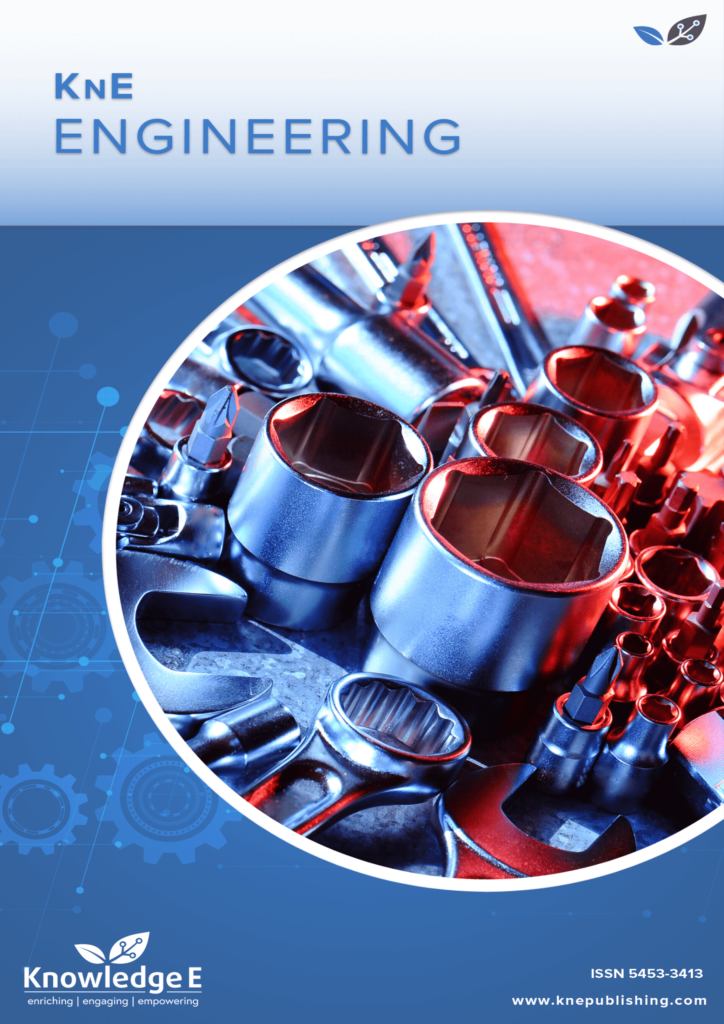
KnE Engineering
ISSN: 2518-6841
The latest conference proceedings on all fields of engineering.
Rheological Characteristics of Loam Compositions with Mineral Additives of Different Genesis and Morfology
Published date:May 07 2018
Journal Title: KnE Engineering
Issue title: Russian Forum of Young Scientists (RFYS)
Pages:195–204
Authors:
Abstract:
Structural clay products manufacturing is depends on the potential of local raw materials. Shoddy silty loams are the main component of molding mixtures in view of shortage of the quality clays. Therefore, methods for determining the structural characteristics of molding compounds are becoming important. The objective of study is the influence of mineral additives different genesis and morphology at structural characteristics and molding properties of the compounds based on shoddy silty loams. Photometrical sedimentometer FSH-6K and optical microscopy method were used for the determining of granulometric compositions and morphological properties of the additives. Conical rheometer method was used for the determining plastic strength of the moulding compounds. Shear plastometer method was used to determining values of the low elastic, high elastic and plastic deformations. It had defined the optimal values of molding clay compound’s moisture in which molding compositions had being tested. Optimal values of the molding composition’s moisture in which molding compounds has not subjected to negative influences of the gravitational water are equal to 15-19%. Structural constants were calculated for molding compositions based on different kinds of additives. Values of the percent of low elastic, high elastic and plastic deformation were calculated on the grounds of rheological curves. Optimal values of composition’s structural characteristics were accepted from the condition of three types of deformations.
References:
[1] Urev, N. B., 1988. Fiziko-himicheskie osnovy tehnologii dispersnyh sistem i materialov [Physicochemical basis of dispersed systems and materials]. M.: Himiya, pp: 256. (in Russian)
[2] Danforth, S. C., I. K.Talo and S. Kwark, 1989. Rheological Behavior of Injection Molding Ceramic-ceramic Composite Formulations. CIM Bull, 926: 88.
[3] Pivinskij, Yu. E., 1995. Reologiya v tehnologii keramiki i ogneuporov. Dispersnye sistemy, metody issledovaniya i ocenki ih reologicheskih svojstv [Rheology in the technology of ceramics and refractories. Disperse systems, methods for studying and evaluating their rheological properties]. Ogneupory, 12: 11-19. (in Russian)
[4] Ozkan, N., C. Oysu, B. J. Briscoe and I. Aydin, 1999. Rheological analysis of ceramic pastes. European Ceramic Society, 19: 2883-2891.
[5] Doraiswamy, D., I. K. Tsao and S. C. Danforth, 1989. Analysis of the Rheological Behavior of Concetrated Ceramic Suspentions. Ceram. Mater. and Compon. Engines: 380-398.
[6] Ilin, A. P., V. Yu. Prokofev, 2002. Upravlenie strukturno-mehanicheskimi svojstvami formovochnyh mass pri poluchenii ekstrudirovannyh nositelej i katalizatorov [Management of structural and mechanical properties of the molding compounds in the preparation of extruded supports and catalysts]. Kataliz v promyshlennosti,
6: 45-51. (in Russian)
[7] Ilin, A. P. and V. Yu. Prokofev, 2004. Fiziko-himicheskaya mehanika v tehnologii katalizatorov i sorbentov: Monografiya [Physico-chemical mechanics of catalysts and adsorbents technologies: Monograph]. Ivan. gos. him.-tehnol. un-t. Ivanovo, pp: 316. (in Russian)
[8] Kruglickij, N. N., 1968. Fiziko-himicheskie osnovy regulirovaniya svojstv dispersij glinistyh materialov [Physical and chemical base of regulation properties of clay materials dispersions]. Kiev: Naukova dumka, pp: 244. (in Russian)
[9] Chimmili, S., D. Doraiswamy and R. K. Gupta, 1998. Shear-induced agglomeration of particulate suspensions. Ind. Eng. Chem. Res., 37 (6): 2073−2077.
[10] Doraiswamy, D., A. N. Mujumdar, I. Tsao, A. N. Beris, S. C. Danforth, A. B. Metzner, 1991. The Cox-Merz rule extended: A rheological model for concentrated suspensions and other materials with yield stress. Journal of Rheology, 35: 647-685.
[11] Balkevich, V. L., Yu. M. Mosin and M. N. Firsova, 1980. Opredelenie plasticheskoj prochnosti dlya ocenki formovochnyh svojstv keramicheskih mass [Determination of plastic strength for evaluation of molding properties of ceramic masses]. Steklo i keramika, 4: 16-17. (in Russian)
[12] Ciullo, R. and S. Robinson, 2009. Wollastonite — versatile functional filler. Paint and Coatings Industry, 11, pp: 50.
[13] Briscoe, B. J. and N. Ozkan, 1997. Characterization of ceramic pastes by an indentation hardness test. J. European Ceramic Society, 17, 14: 1675-1683.
[14] Armstrong, M.J., A.N. Beris, S.A. Rogers and N.J. Wagner, 2016. Dynamic shear rheology of a thixotropic suspension: Comparison of an improved structure-based model with large amplitude oscillatory shear experiments. Journal of Rheology, 60(3): 433-450.
[15] de Souza Mendes, P. R., R. L. Thompson, A. A. Alicke, and R. T.Leite, 2014. The quasilinear large-amplitude viscoelastic regime and its significance in the rheological characterization of soft matter. J. Rheol., 58: 537–561.
[16] O’Brien, V. T. and M. E. Mackay, 2000. Stress components and shear thickening of concentrated hard sphere suspensions. Langmuir, 16 (21): 7931–7938.
[17] Jacob, A. R., A. P. Deshpande and L. Bouteiller, 2014. Large amplitude oscillatory shear of supramolecular materials. J. Non-Newtonian Fluid Mech, 206: 40–56.
[18] Coussot, P., A. I. Leonov, and J. M. Piau, 1993. Rheology of concentrated dispersed systems in a low molecular weight matrix. J. Non-Newtonian Fluid Mech, 46: 179– 217.
[19] Kim, J. M., A. P. R. Eberle, A. K. Gurnon, L. Porcar, and N. J. Wagner, 2014. The microstructure and rheology of a model, thixotropic nanoparticle gel under steady shear and large amplitude oscillatory shear (LAOS). J. Rheol., 58(5): 1301–1328.
[20] Eberle, A. P. R., and L. Porcar, 2012. Flow-SANS and Rheo-SANS applied to soft matter. Curr. Opin. Colloid Interface Sci., 17: 33–43.
[21] Pignon, F., A. Magnin, and J. Piau, 1997. Butterfly light scattering of a sheared thixotropic clay gel. Phys. Rev. Lett., 79(23): 4689–4692.
[22] De Bruyn, J. R., F. Pignon, E. Tsabet, and A. Magnin, 2007. Micron-scale origin of the shear-induced structure in Laponite-poly (ethylene oxide) dispersions. Rheol. Acta, 47: 63–73.